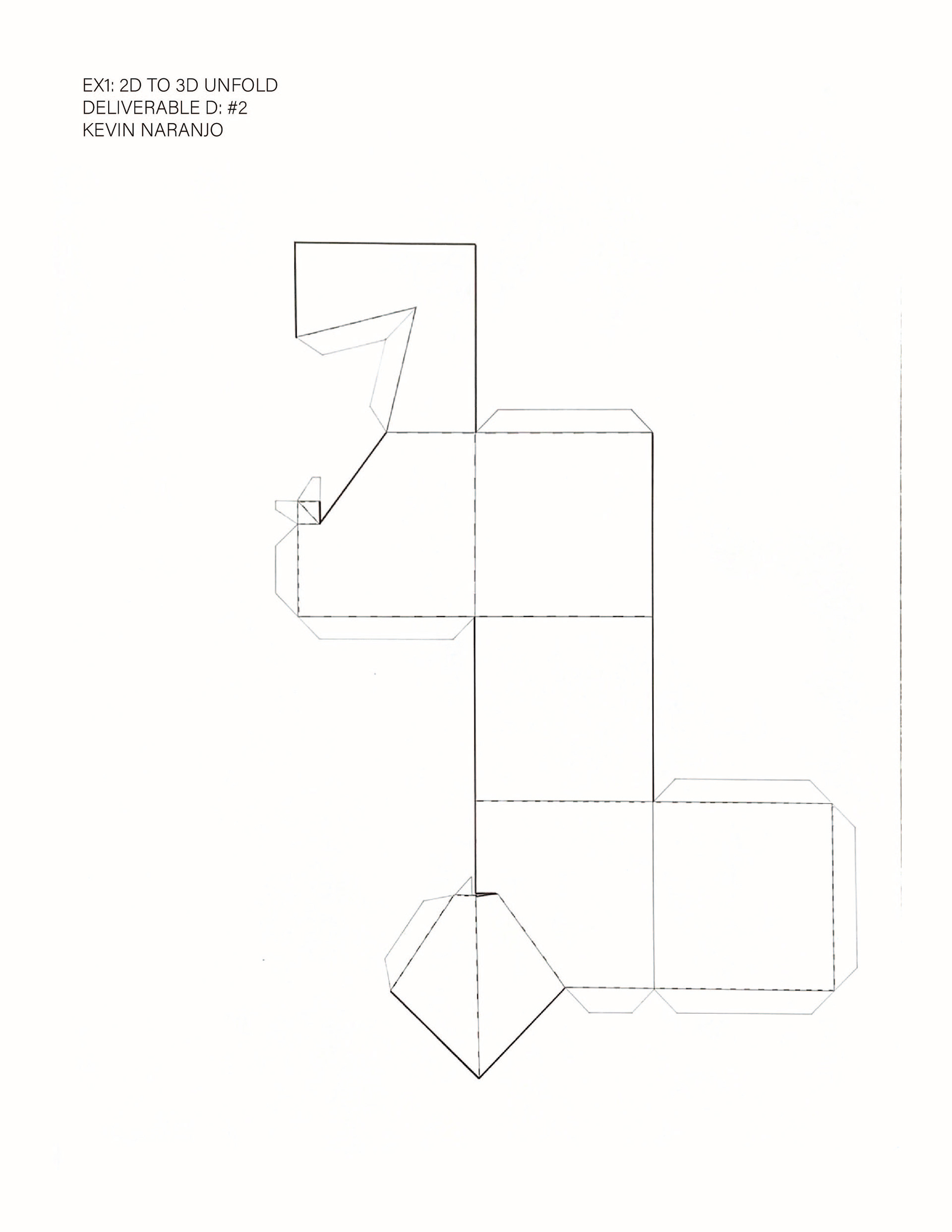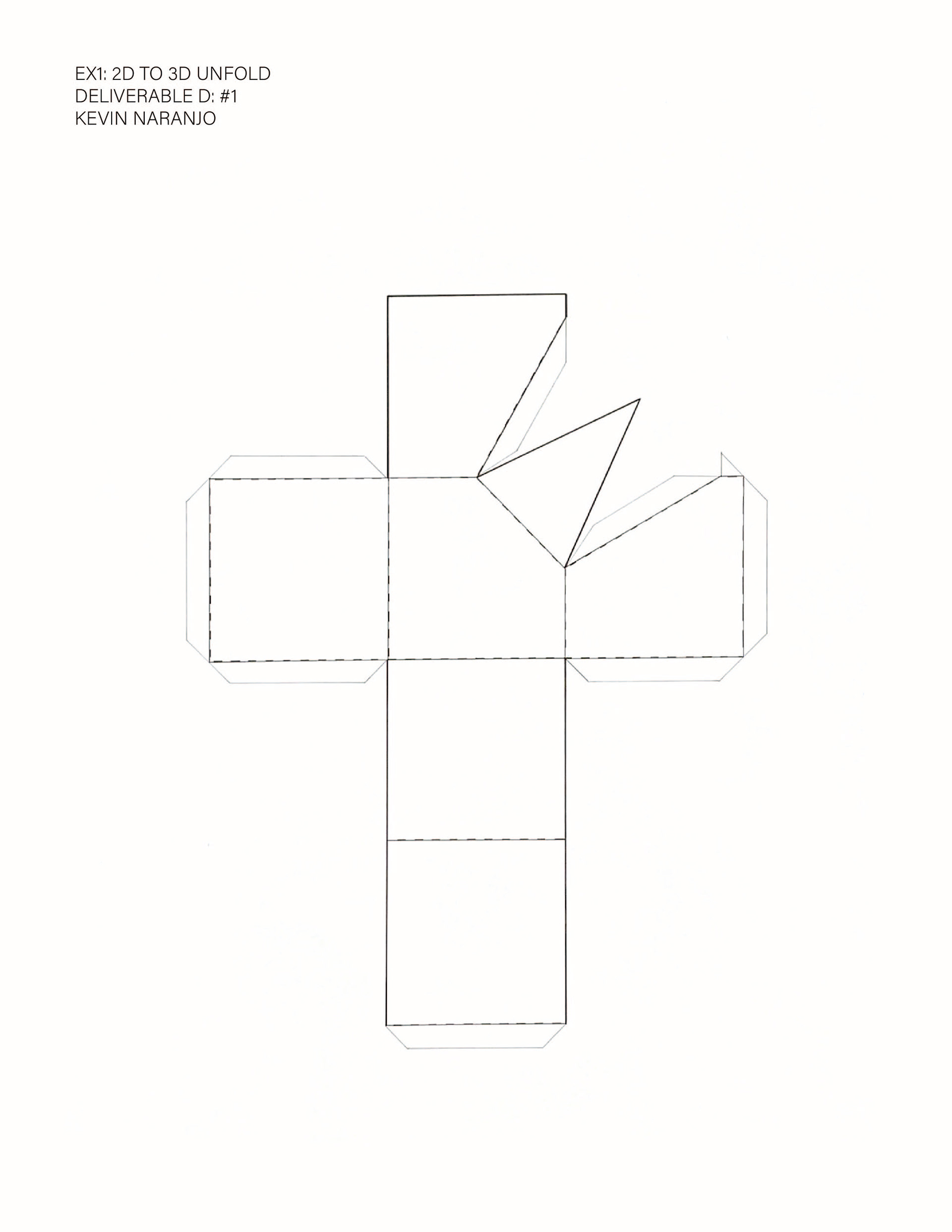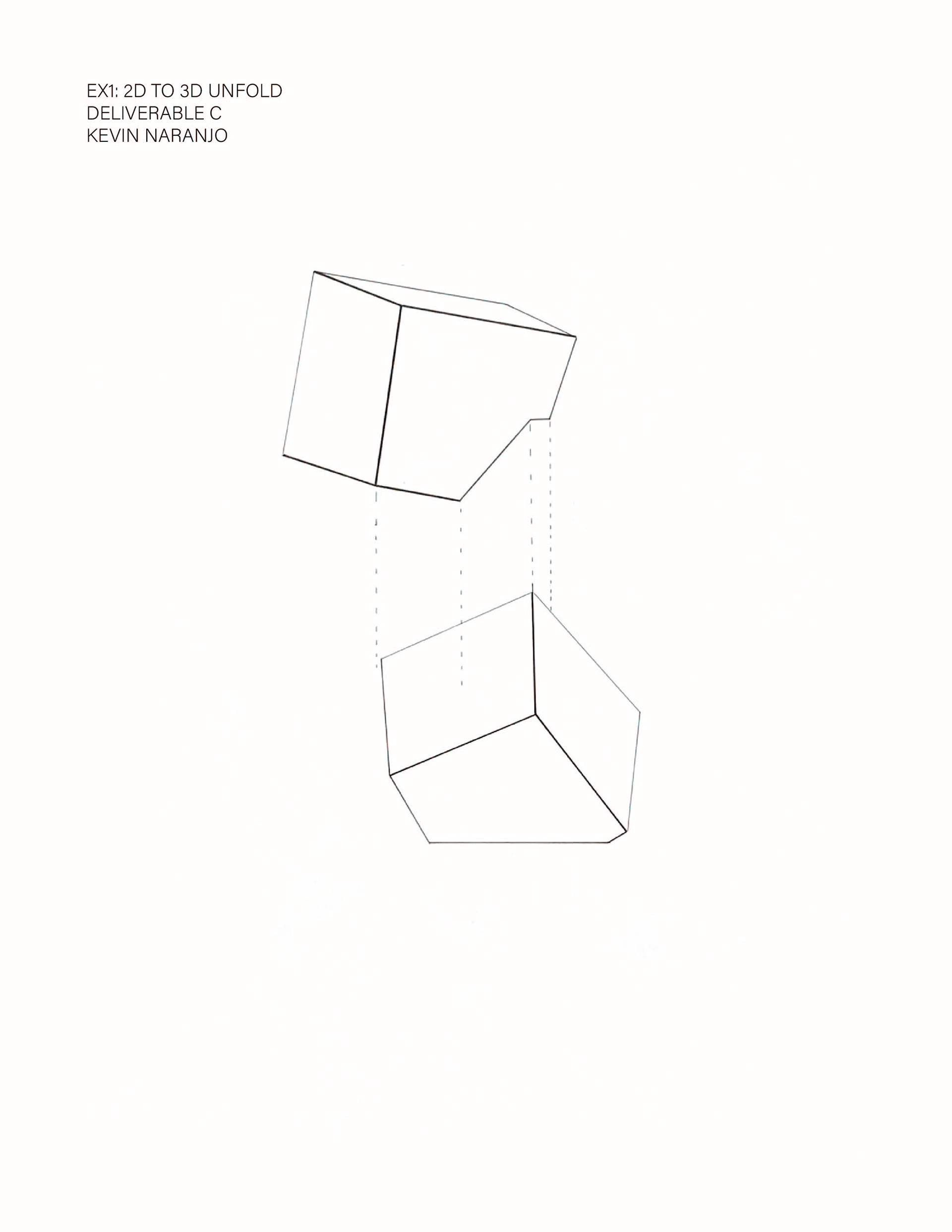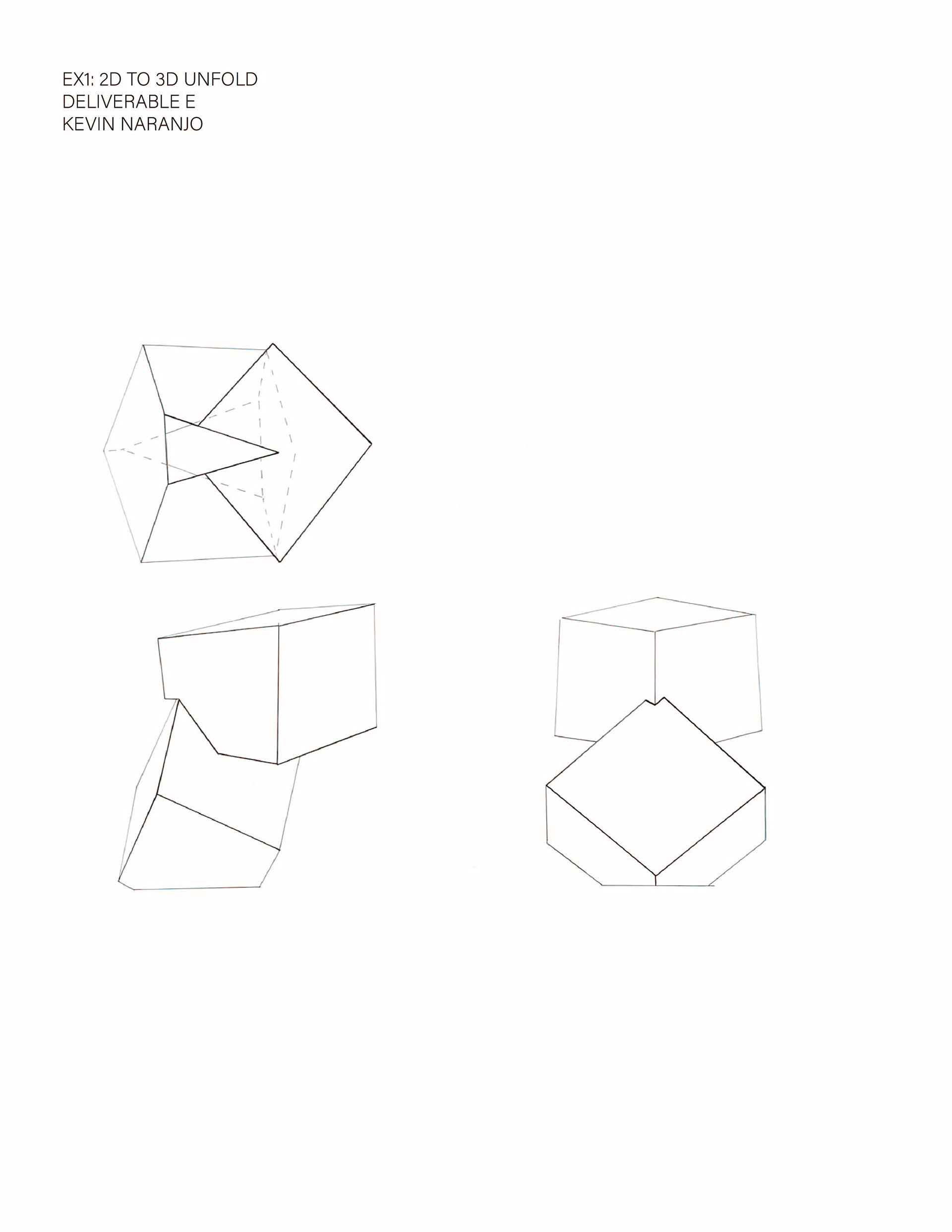Fall 2019:
The assignment is to create 2D designs for two paper cubes that, when assembled, combine into a single object, transitioning from an abstract concept to a concrete form. One of three concepts—Superimposition, Twinning, or Interpenetration—must be used in the design. The cubes can be modified to reduce their volume but should retain the overall cubic shape. The final cubes must fit together securely with no gaps at the faces, edges, or corners. Glue cannot be used; instead, the design must include a fitting connection to hold them together. Additionally, the cubes should be able to stand upright on a flat surface without the need for a base.
For my project, I decided to use the interpenetration concept. This meant designing my cubes to intersect or overlap each other, and also giving the illusion that one cube was penetrating into the ground. I started by cutting out 12 squares, which I taped together to form two cubes. Using tape made it easier for me to make adjustments and modifications as needed. Once I had a design that worked, I unfolded the squares to create a template.
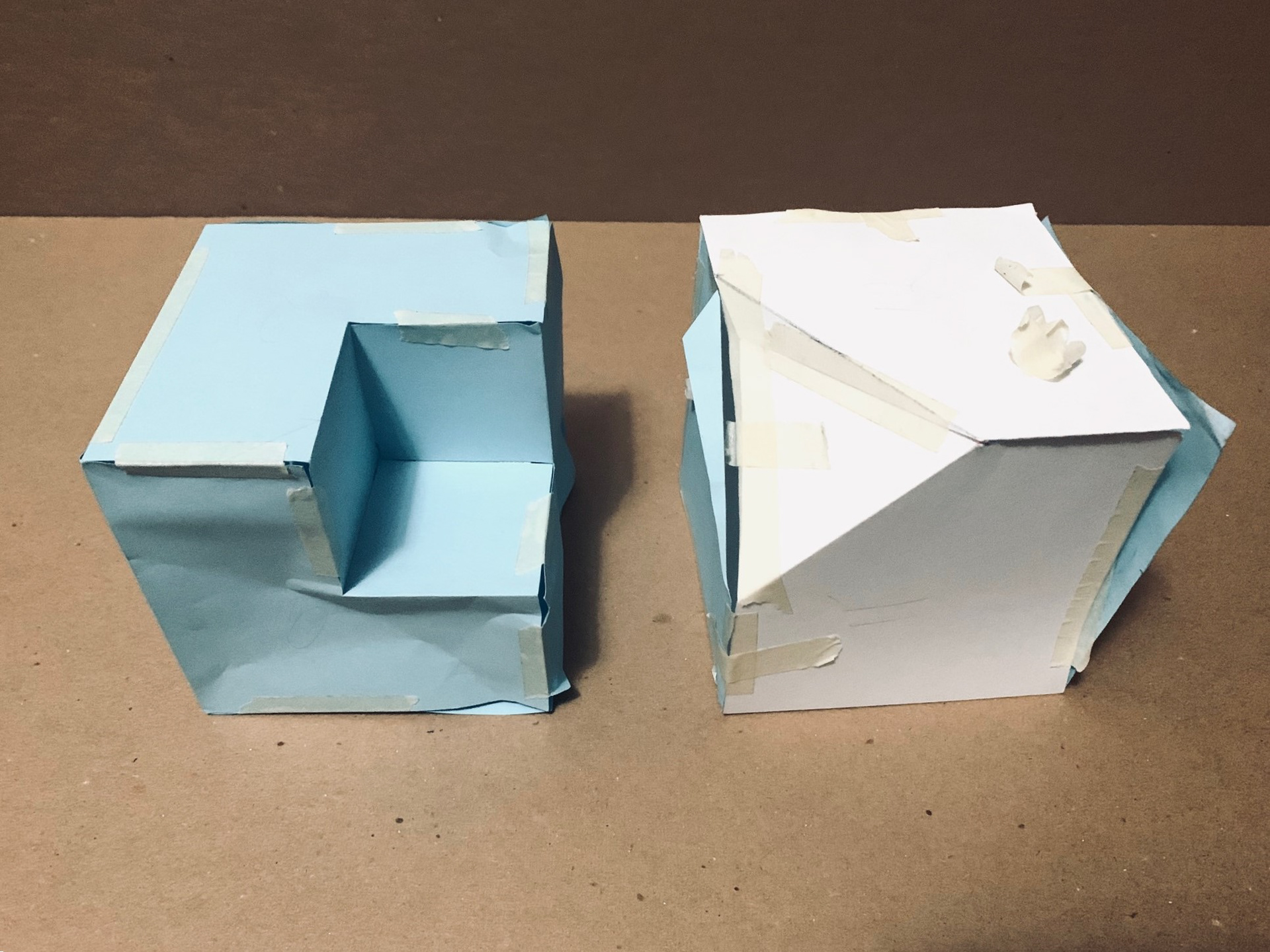
Cubes side by side showing alterations
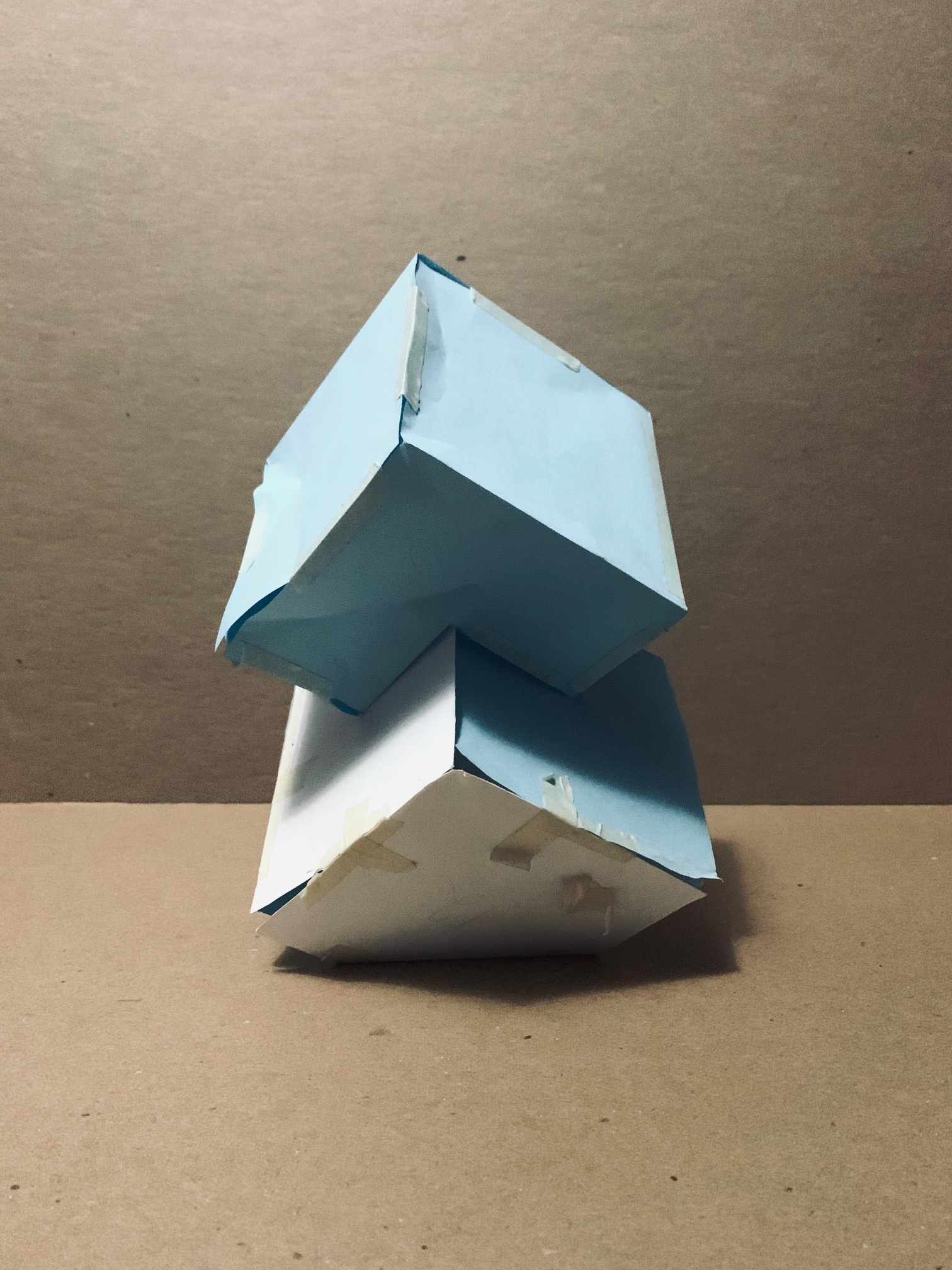
Front View
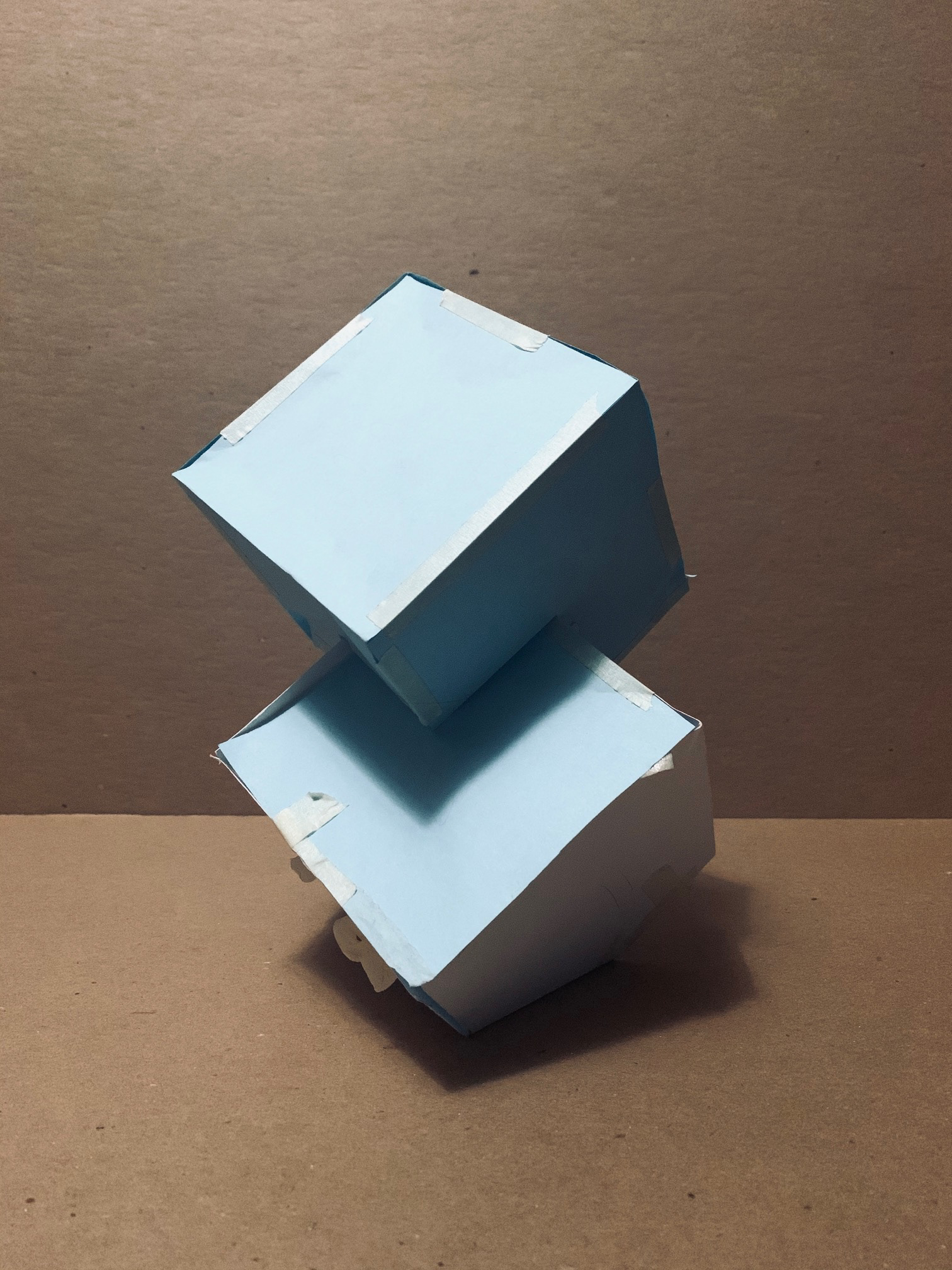
Rear View
Study Model One:
In the first photo, the first cube on the left has been altered to reduce its volume, making it smaller so it can be placed on the corner of the second cube on the right. The second cube has also had some volume subtracted to add an extra face, creating the illusion that the bottom cube is penetrating into the ground. The second and third photos show the cubes stacked together, illustrating the interpenetration concept, with the bottom cube giving the impression of penetrating the ground.
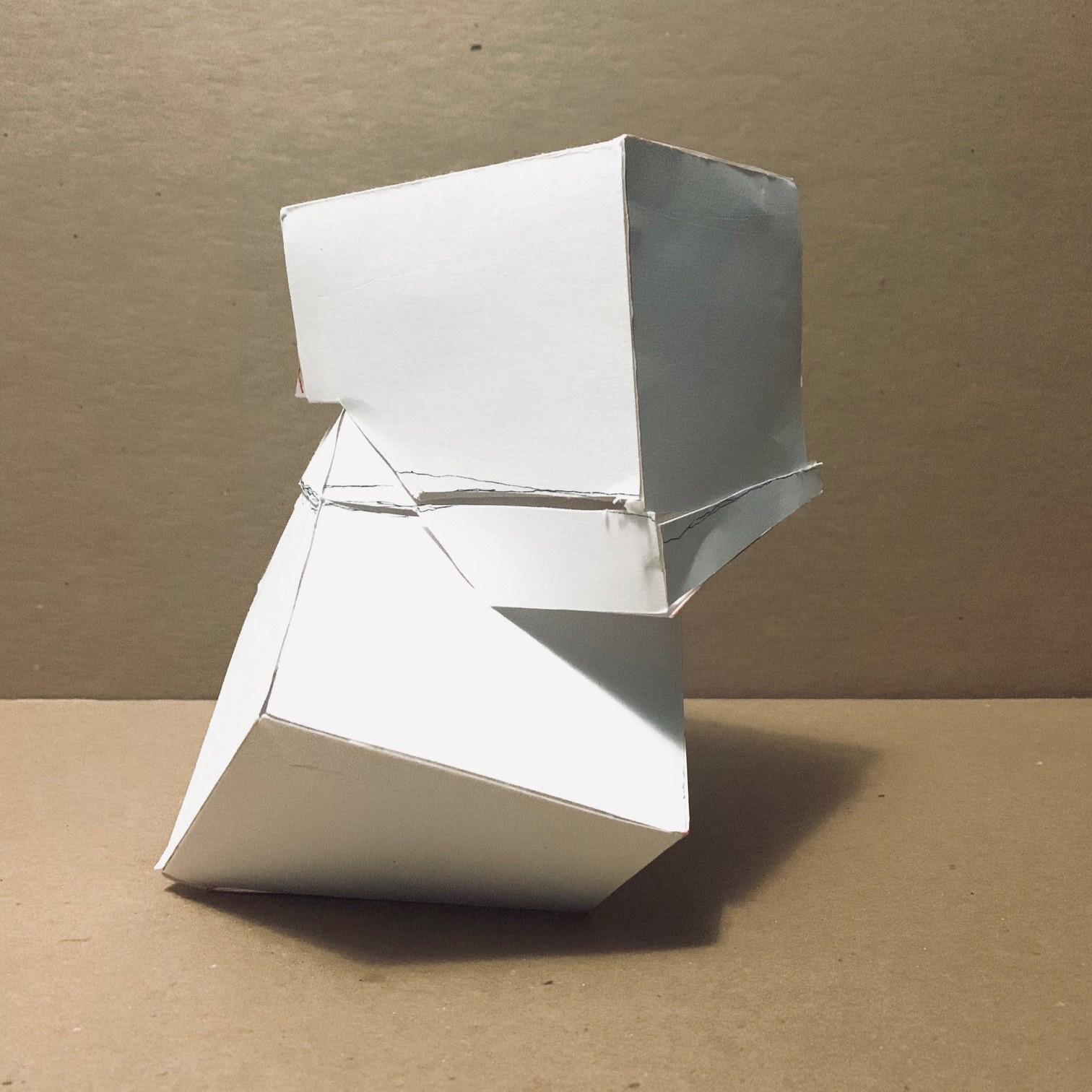
Side View
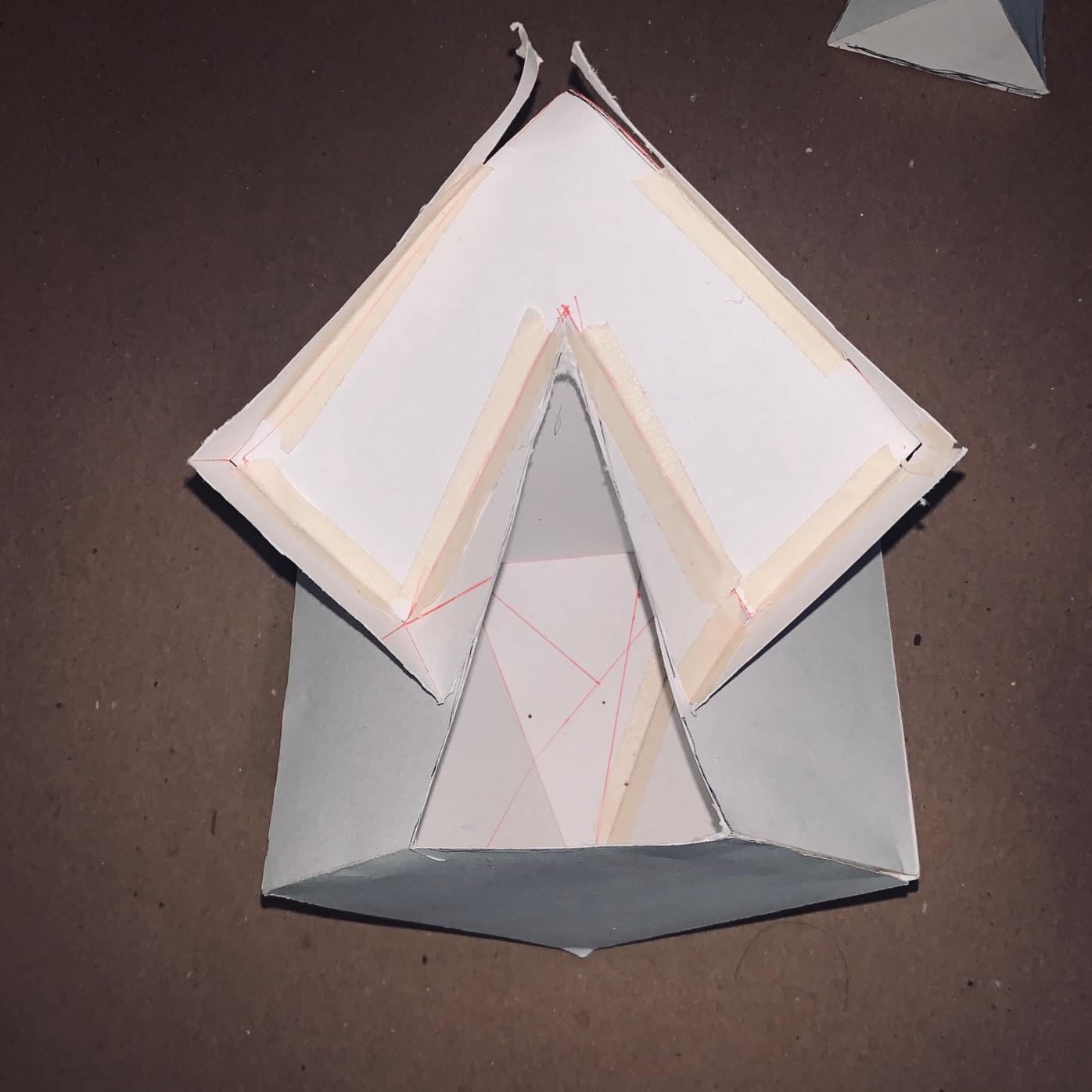
Section cut to see relationship within cubes
Study Model Two:
In the left photo above, my second iteration of cubes shows changes to their balancing. The bottom cube now forms a 20/80/80 acute triangle face instead of the 60/60/60 acute triangle from the first model. This change ensures that the top cube interpenetrates on the side more than the corner, creating a cantilever effect while maintaining balance. The right photo illustrates the relationship between the cubes, highlighting how far the interpenetration occurs from the corner compared to the first model.
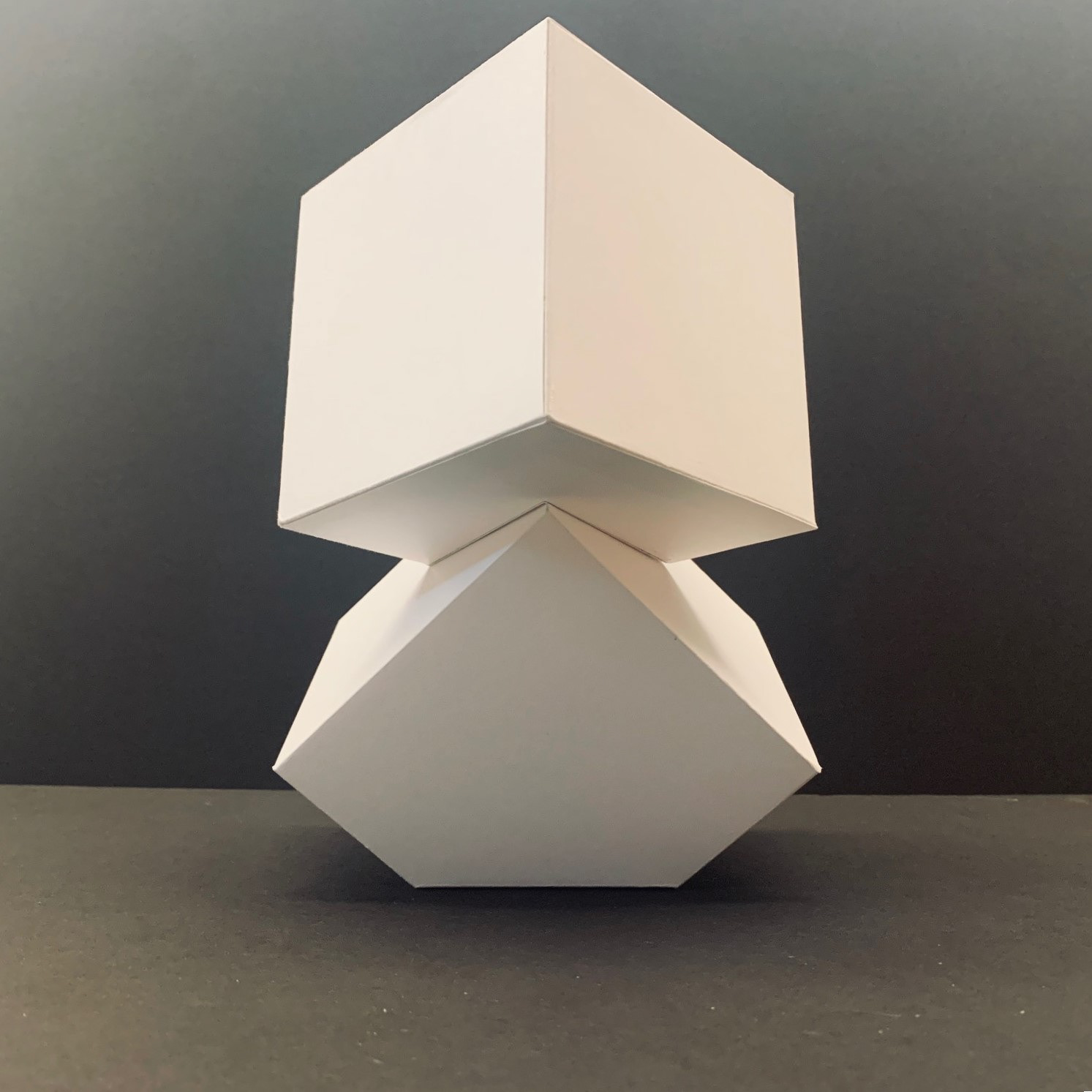
Front View
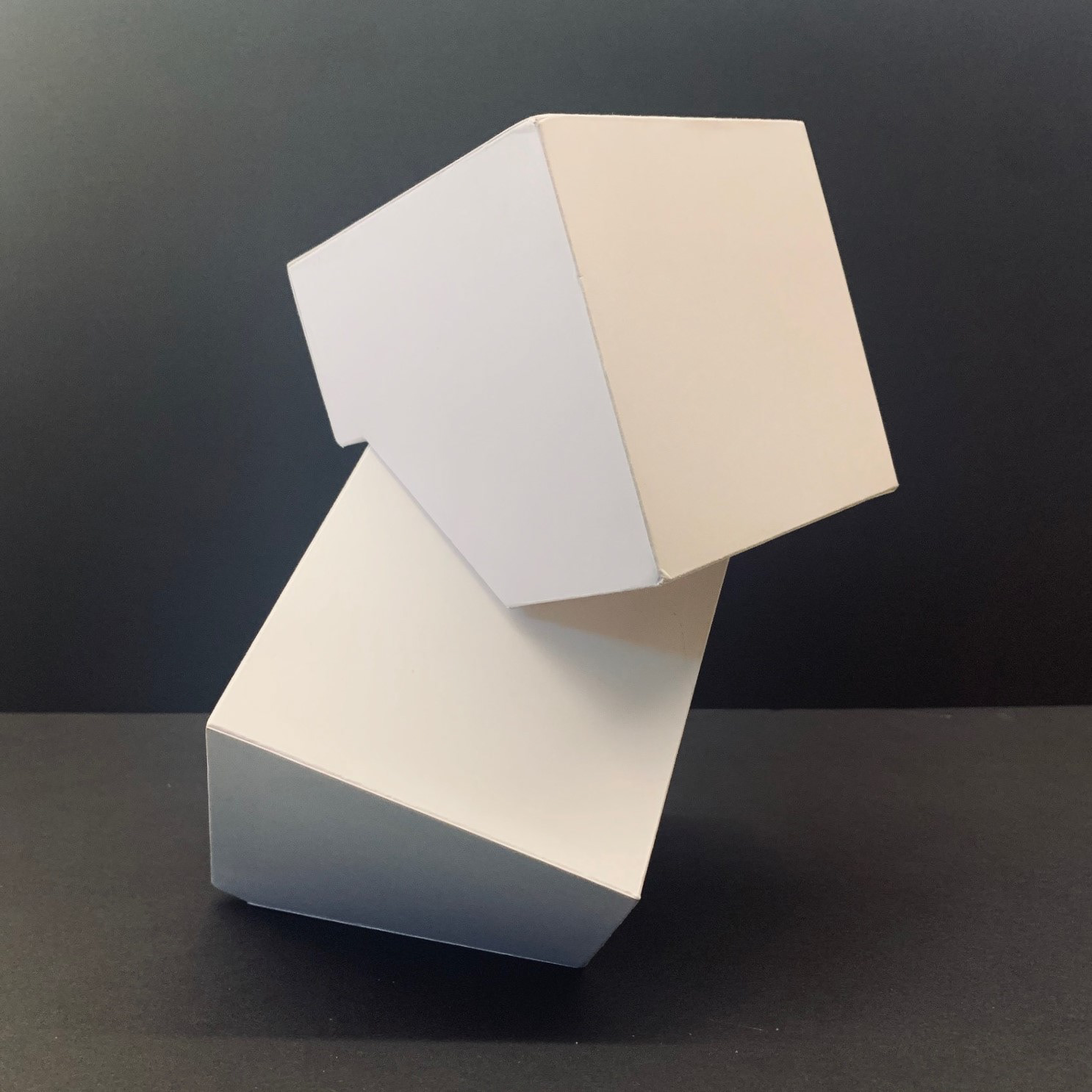
Side View
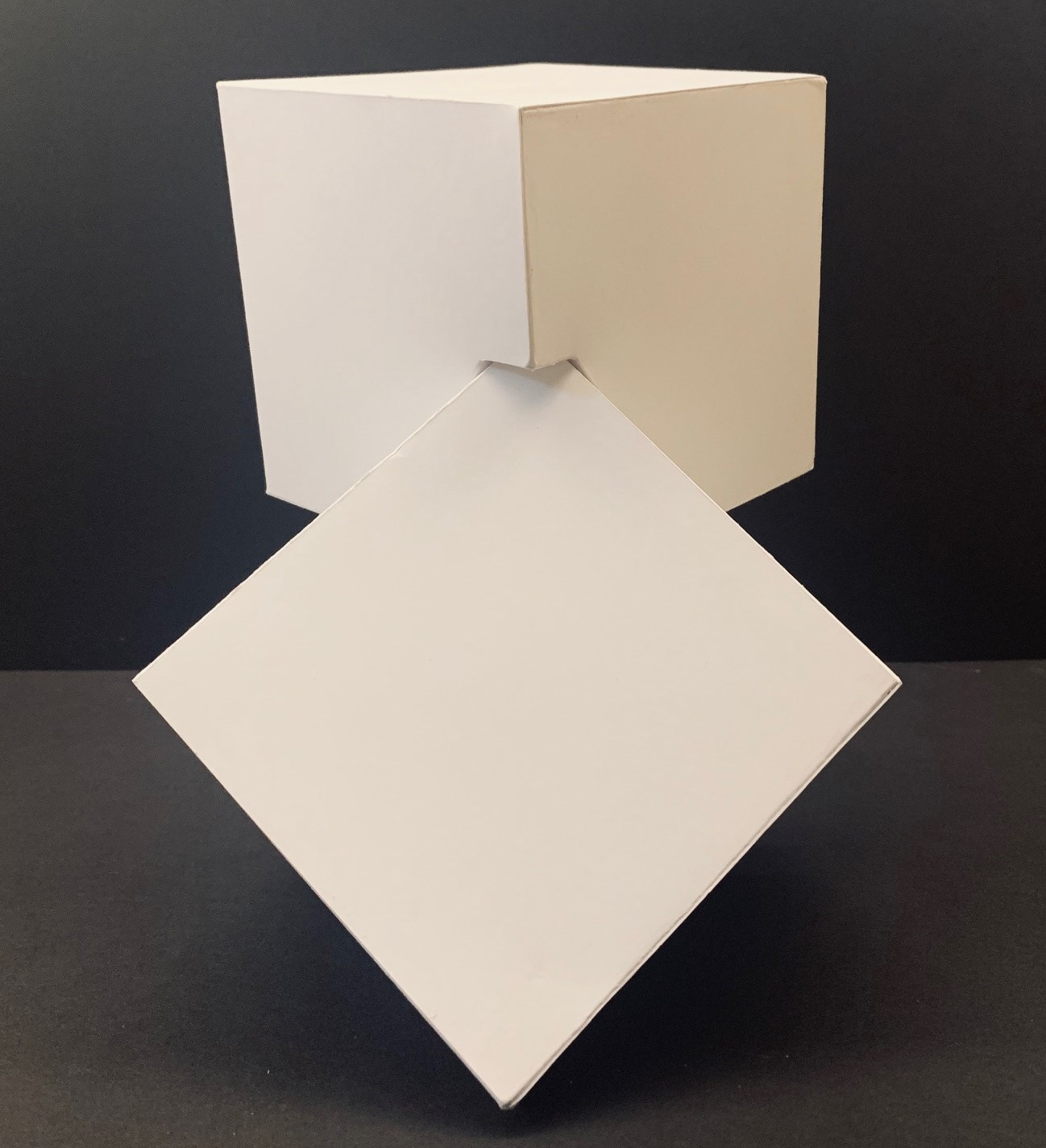
Rear View
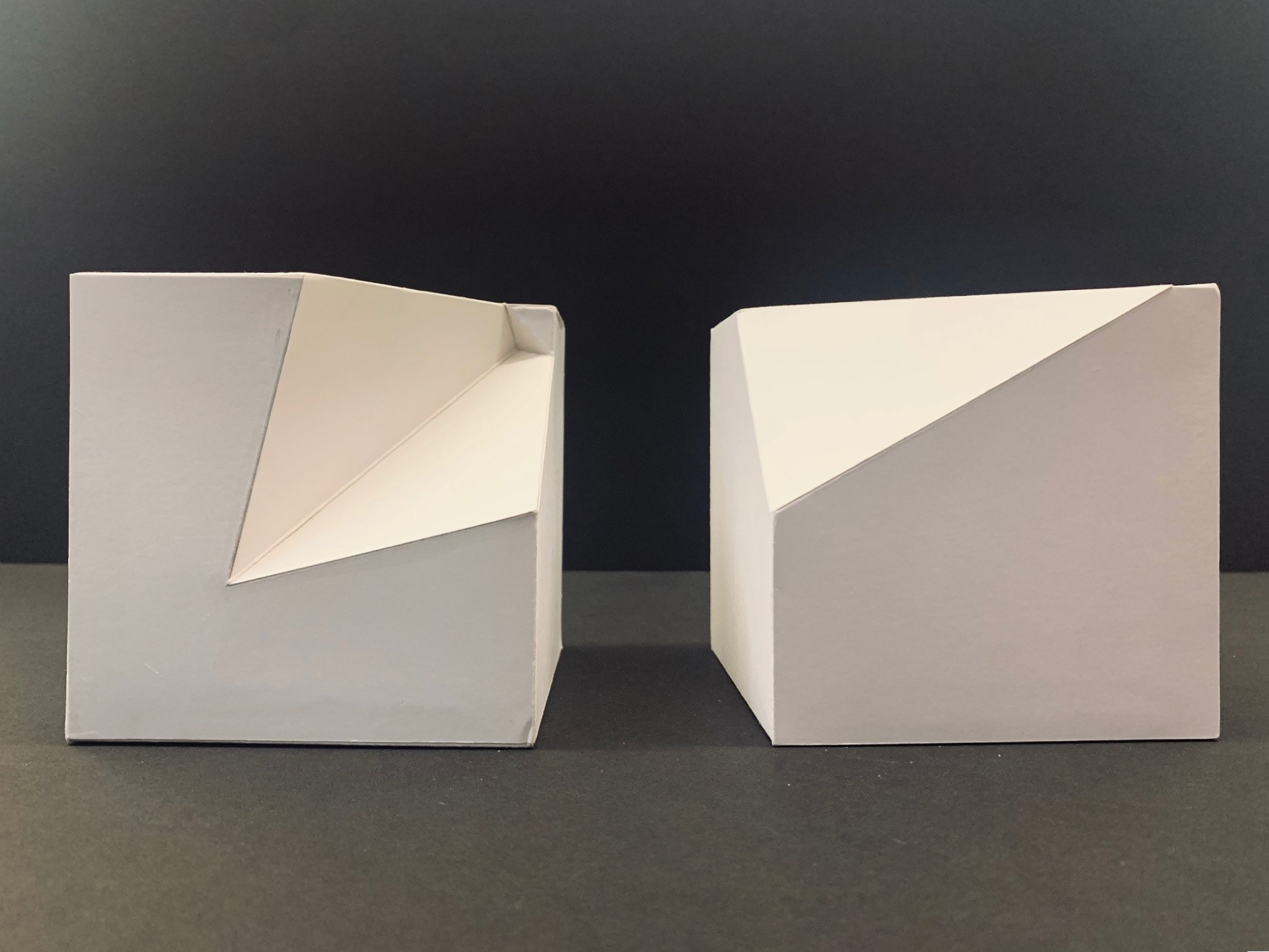
Cubes side by side showing alterations
Final Model:
The photos above show my final design, which is based on the second study model with precise measurements to ensure the cubes balance when upright. The top cube needed to be angled up more to shift some weight to the opposite side of the cantilever for balance. The final photo on the right shows the subtractions made to the cubes to allow the left cube to cantilever on top of the right cube and create the illusion of one cube penetrating the ground. Below, you will see hand-drawn 2D templates for recreating this model, along with a diagram showing where the cubes interpenetrate, a section, and elevations from the side and front.
